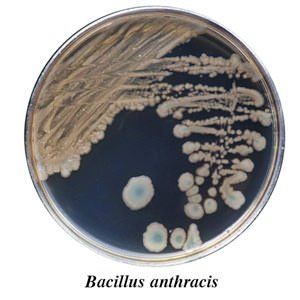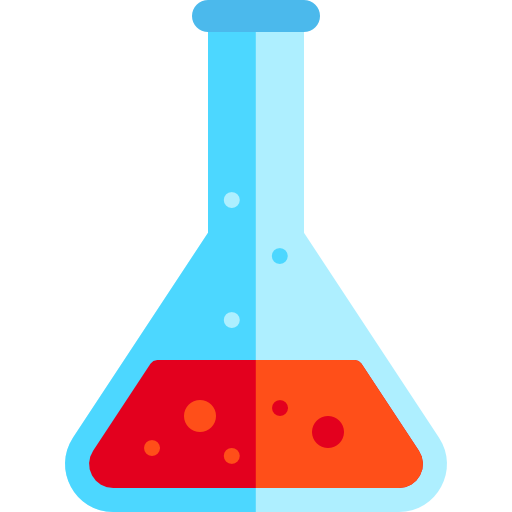R & F® Anthracis Chromogenic Agar

Documentation Links:
Certificate of analysis
SDS

Colony Appearance
Bacillus anthracis appears as cream or pale teal-blue colonies 2.0-5.0 mm in diameter with a thick cream rim after 24 h at 37°C. After 48 h at 37°C these same colonies will increase to 6.0 mm in diameter and appear as teal-blue color with a thick cream rim. Unlike B. anthracis, B. cereus and B. thuringiensis appear as dark teal-blue colonies 6.0-7.0 mm in diameter with a thin cream rim only after 24 h at 37°C and remain the same size and color after 48 h. Other Bacillus species will either not grow or appear as cream, white or clear colored colonies 1.0-2.0 mm in diameter after both 24 and 48 h. The Gram (-)s are inhibited.

Mechanism
Our medium contains the X-Indoxyl-choline phosphate (X-CP) that detects the enzyme phosphatidylcholine phospholipase C (PCPLC) which is found in B. anthracis and B. cereus/B. thuringiensis. However, the rate of production of this enzyme is about 10 times greater for B. cereus/B. thuringiensis than B. anthracis. Therefore, B. cereus/B. thuringiensis strains produce very dark teal-blue colonies after 24 hours, whereas, B. anthracis produce pale teal-blue colonies with a wide cream colored ring after 24 or 48 hours. Manganese chloride and bovine albumin is added for the enzyme to recognize the chromogenic substrate.

Industry Types
Bioterrorism (environmental, drinking water and food).
See Product Brochure, Use Protocol, SDS, Certificate of Analysis and Medium Preparation for more information about our medium.

Advantages/Benefits
1. The medium has been tested and recommended by the FDA as the medium of choice to enhance Bacillus anthracis identification in dealing with the potential bioterrorism threat.
2. The only chromogenic product on the market; uses X-Choline-P to detect PCPLC in B. anthracis – reduces false positives/negatives.
3. Single-step identification of Bacillus anthracis, does not require the use of multiple media for isolation of presumptive Bacillus anthracis colonies.
4. Readily differentiates Bacillus anthracis from related Bacillus cereus and Bacillus thuringiensis species.
5. Efficient recovery from foods, environmental sources (water, cloth, and paper), and clinical samples.
6. Competitors’ non-chromogenic medium (PLET and blood agar-BA) not as selective and will allow other Bacillus sp. to grow many of which are indistinguishable from B. anthracis. PLET and BA media also did not identify all B. anthracis strains-false negatives.
7. The shelf life of prepared plates remains stable for at least 45 days, stored in the dark at 2-8°C. One bottle of plating medium powder and one box of supplements will make approximately 105 plates.
8. Listed in the FERN (Food Emergency & Response Network) and has been tested by the FDA, USDA, CDC, state departments of health and agriculture and the military.

Publications

Ordering Information
M-0150
R & F® Anthracis Chromogenic Detection System (120 g Bottle of Powder & one Supplement Box – Makes 100-110 Plates)
M-0100
R & F® Anthracis Chromogenic Plating Medium (120 g Bottle)
M-0110
R & F® Anthracis Supplement for Plating Medium (1 Box)
M-0160
R & F® Anthracis Chromogenic Prepared Plate (Minimum Order of 20 Plates – Shelf life is 45 Days)
